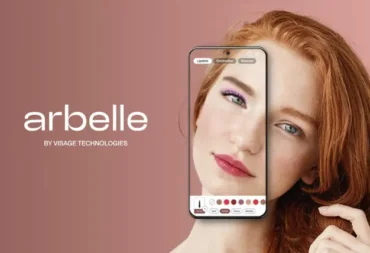Customer emotion detection for beauty brands: How to know what your customers truly feel
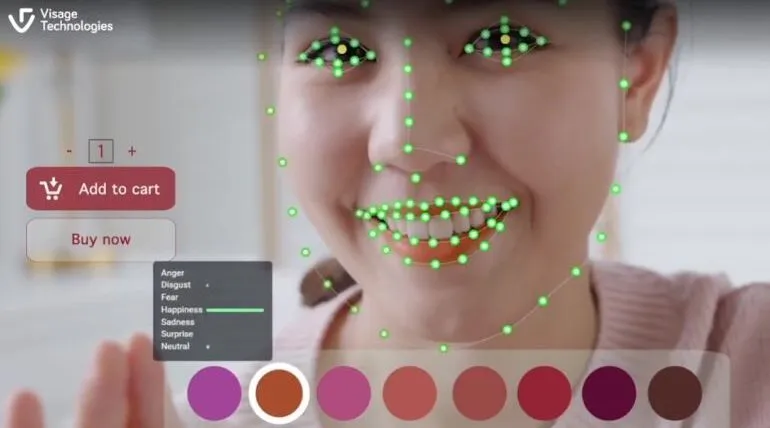
Understanding how customers feel has always been important for beauty brands. It’s an industry where success is measured not just in sales, but in the glow of a satisfied customer.
Now, imagine knowing exactly how your customers feel about your products — not just by what they say, but what their faces reveal in real time. This is the cutting edge of beauty tech, made available by emotion recognition.
In this article, we’ll dive deep into the use cases of customer emotion detection in the beauty industry, and explain its key benefits.
- What is emotion recognition?
- Why should beauty brands care about customer emotion detection?
- Example use case: Virtual makeup try-on with emotion analysis
- Other ways beauty brands can use emotion recognition technology
- Key benefits of facial emotion recognition for beauty brands
- Conclusion: emotion recognition helps you gain deeper insights into how your customers really feel about your brand and products
What is emotion recognition?
Emotion recognition technology analyzes facial expressions to detect a person’s emotional state. We wrote about it in depth in our previous blog on facial emotion recognition, but here’s the short version of how it works:
- The system detects the person’s face using a camera.
- It extracts key features of the face and analyzes them.
- It classifies the emotion using a machine learning model trained on a large dataset.
This process happens in real time, allowing for continuous analysis of a person’s emotional state as it changes. It can detect both obvious expressions and subtle micro-expressions that might not be noticeable to the human eye.
Why should beauty brands care about customer emotion detection?
“As consumers, we first decide on a purchase based on emotion, and then try to justify it through the more rational parts of our brain.”
How Emotion-Detection Technology Will Change Marketing (hubspot.com)
For an industry where emotional connection is key to brand loyalty and purchasing decisions, emotion recognition technology is a powerful tool for understanding and connecting with customers better.
Old ways of getting feedback, like star ratings or surveys, have limits. They take time to respond, and customer answers can be affected by things unrelated to the product. These methods often miss the small changes in how a customer feels when using a beauty product.
On the other hand, emotion recognition technology gives instant, ongoing feedback. By looking at facial expressions in real-time, it can spot small changes in emotion that customers might not even notice themselves. This creates a lot of honest data about how customers react to products, packaging, and ads.
➮ Did you know? Customers who use virtual try-ons are
2.4 times more likely to make a purchase.
For example, when used with virtual makeup try-ons, emotion recognition can track how customers react as they try different makeup colors. A small smile or look of surprise can be caught right away, showing what the customer likes without them having to say it.
This quick emotional feedback can improve shopping in many ways. In an online environment, if a customer looks happy or excited about a product, the system could highlight the “Buy Now” button or suggest matching items. If they look unsatisfied, it could show different products or give more information.
Example use case: Virtual makeup try-on with emotion analysis
Oriflame, a beauty brand, implemented a virtual makeup try-on app called Makeup Wizard using our face-tracking technology. This app allows users to virtually apply various makeup products in real time using their phone’s camera.
By integrating emotion recognition into this system, Oriflame could also:
- Analyze users’ emotional reactions to different makeup looks.
- Gather data on which products elicit positive emotions.
- Provide personalized product recommendations based on emotional responses.
- Improve the user experience by adjusting the interface based on detected emotions and impact the user journey.
- Collect valuable insights for product development and marketing strategies.
The app’s ability to work offline and on various devices makes it ideal for widespread use, potentially providing Oriflame with a large dataset of customer emotions related to their products.
Other ways beauty brands can use emotion recognition technology
Enhancing product recommendations
You can enhance your product recommendation systems by analyzing customers’ emotional responses to different products.
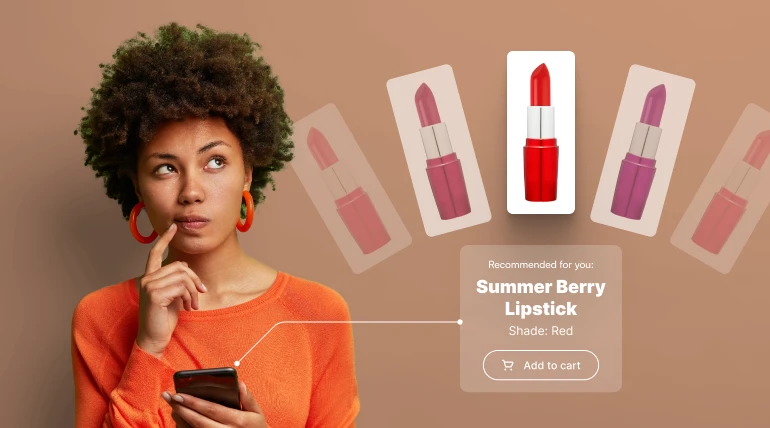
For example, you could enable facial recognition on your website that uses the customer’s webcam (with permission) to gauge reactions as they browse products. The system could then suggest items that elicit positive emotions, leading to more personalized and effective recommendations.
Analyzing customer preferences
By tracking emotional responses during interactions with your products, you can build more detailed profiles of customer preferences. This can reveal trends in emotional reactions to certain colors, textures, or scents, helping you better understand your target market.
Testing new products
You can use emotion recognition to test reactions to new products before launch. In controlled settings, participants could try products while their emotional responses are analyzed. This provides valuable insights into initial reactions, helping you refine your products or marketing messages before their full-scale release.
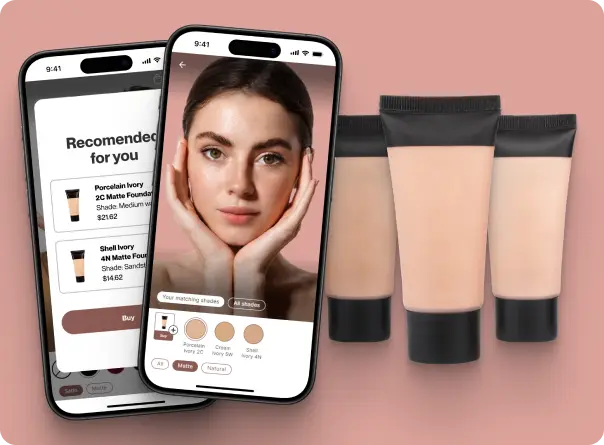
Evaluating marketing campaign effectiveness
You can use customer emotion detection to assess the impact of marketing materials. For instance, you could analyze viewers’ emotional responses to video ads or social media content in real time. This allows for quick adjustments to maximize engagement and positive sentiment.
Interactive marketing and in-store experiences
You could create interactive installations that respond to participants’ emotions. For example, a digital billboard could change its display based on the collective emotional response of passersby, creating an engaging and memorable brand experience.
In physical stores, customer emotion detection could be integrated into smart mirrors or digital displays. As customers move through the store, the system could detect their emotional states and adjust the shopping experience accordingly. For instance, if a customer appears frustrated, the system could alert a sales associate to offer assistance, or if they seem excited, it could provide more information about the product they’re viewing.
Key benefits of facial emotion recognition for beauty brands
1. Improved personalization
Emotion recognition allows you to tailor your offering based on customers’ real-time reactions. By understanding how a customer feels about certain products or colors, your brand can offer more accurate recommendations. This level of personalization can significantly enhance the shopping experience and increase customer satisfaction.
2. Enhanced customer experience
By detecting and responding to customers’ emotions in real time, you can create more engaging and interactive experiences. For example, a virtual try-on app could adjust its suggestions based on a customer’s emotional response, making the process more enjoyable and effective.
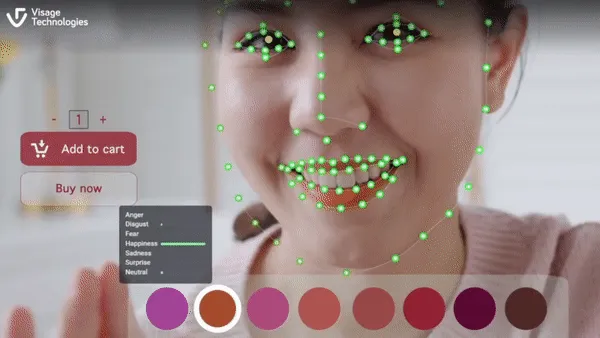
3. Increased cosmetic marketing effectiveness
Emotion recognition helps you understand what your customers think about your advertising, product packaging, and cosmetic marketing materials — and you can even see it in real time.
For example, suppose you find that people respond best to your ads at certain times of the day, after getting off work or during their lunch break. With this information, you can set your ads to run only during those times, making your customers happier, increasing sales, and getting more value from your advertising budget.
Using these insights, you can create campaigns that resonate more deeply with your target audience and achieve better results.
4. Data-driven product development
By analyzing emotional responses to products, you can gather crucial feedback for product development. This data can inform decisions about everything from color palettes to packaging design, helping you to create products that customers truly love.
5. Improved in-store experiences
For physical stores, emotion recognition can help your staff provide better service. By understanding a customer’s emotional state, they can adjust their approach, offering help when needed or giving space when a customer seems content.
6. Competitive advantage and brand-building
When you use emotion recognition effectively, you can gain a significant edge over your competitors. By better understanding and responding to customer emotions, you can create more loyal customer bases and drive innovation in the industry.
Conclusion: emotion recognition helps you gain deeper insights into how your customers really feel about your brand and products

Whether you’re a global cosmetics giant or a niche skincare brand, following the latest technology trends is no longer optional. It’s imperative for staying ahead in the ever-evolving world of beauty.
With emotion recognition, you can create more personalized, engaging experiences for your customers, while also gaining valuable insights to drive product development and marketing strategies.
However, it’s important to note that while this technology is powerful, it should be used responsibly and ethically, with full transparency to consumers. When implemented thoughtfully, emotion recognition can significantly improve your customer relationships and your products, too.
Try our emotion recognition software
Interested in trying out emotion recognition for yourself? Feel free to try a live demo of our software, or contact us to get more info about your specific use case.

